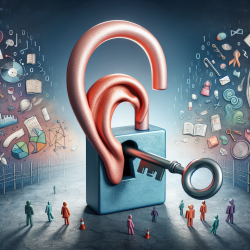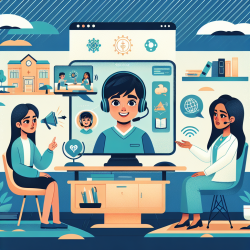As Special Education practitioners, we continuously strive to enhance our skills and provide the best possible support to our students. One area that often requires our focused attention is hearing impairment. With the release of "A Bicentennial Monograph on Hearing Impairment: Trends in the USA," we have a treasure trove of research and insights at our disposal. This blog will guide you on how to implement the findings from this comprehensive monograph to improve your practice and encourage further research.
Understanding the Monograph
The monograph, edited by R. Frisina and reviewed by Daniel Ling, is a compilation of 19 papers by internationally renowned experts. It covers various aspects of hearing impairment, including audiological, educational, and medical treatments. The research highlights trends over the past decade, offering valuable insights for practitioners.
Key Takeaways and Implementation Strategies
Here are some key takeaways from the monograph and how you can implement them in your practice:
- Early Identification and Intervention: The monograph emphasizes the importance of early identification and intervention. Implement regular hearing screenings in schools to identify students with hearing impairments early. Use the latest audiological assessment tools to ensure accurate diagnosis.
- Inclusive Educational Practices: The research highlights the need for inclusive educational practices. Develop individualized education plans (IEPs) that include specific accommodations for students with hearing impairments. Ensure that teachers are trained to use assistive technologies like FM systems and captioned videos.
- Collaborative Approach: The monograph advocates for a collaborative approach involving audiologists, speech therapists, educators, and parents. Facilitate regular meetings to discuss the progress and challenges of students with hearing impairments. Encourage open communication and shared decision-making.
- Use of Technology: Leverage technology to support students with hearing impairments. Online therapy services, like those provided by TinyEYE, can offer flexible and accessible support. Ensure that all educational materials are available in accessible formats.
- Continuous Professional Development: Stay updated with the latest research and trends in hearing impairment. Attend conferences, webinars, and workshops. Encourage your team to pursue advanced training and certifications.
Encouraging Further Research
While the monograph provides a solid foundation, continuous research is crucial for advancing our understanding and improving our practices. Here are some ways to encourage further research:
- Participate in Research Studies: Encourage your school district to participate in research studies related to hearing impairment. Collaborate with universities and research institutions.
- Conduct Action Research: Conduct action research within your school to identify specific challenges and test new interventions. Share your findings with the broader educational community.
- Advocate for Funding: Advocate for funding to support research on hearing impairment. Highlight the importance of evidence-based practices to policymakers and stakeholders.
Conclusion
Implementing the outcomes of the research presented in "A Bicentennial Monograph on Hearing Impairment: Trends in the USA" can significantly enhance our ability to support students with hearing impairments. By adopting early identification practices, inclusive educational strategies, a collaborative approach, and leveraging technology, we can unlock the full potential of our students. Additionally, encouraging further research will ensure that we continue to evolve and improve our practices.
To read the original research paper, please follow this link: A Bicentennial Monograph on Hearing Impairment: Trends in the USA.










